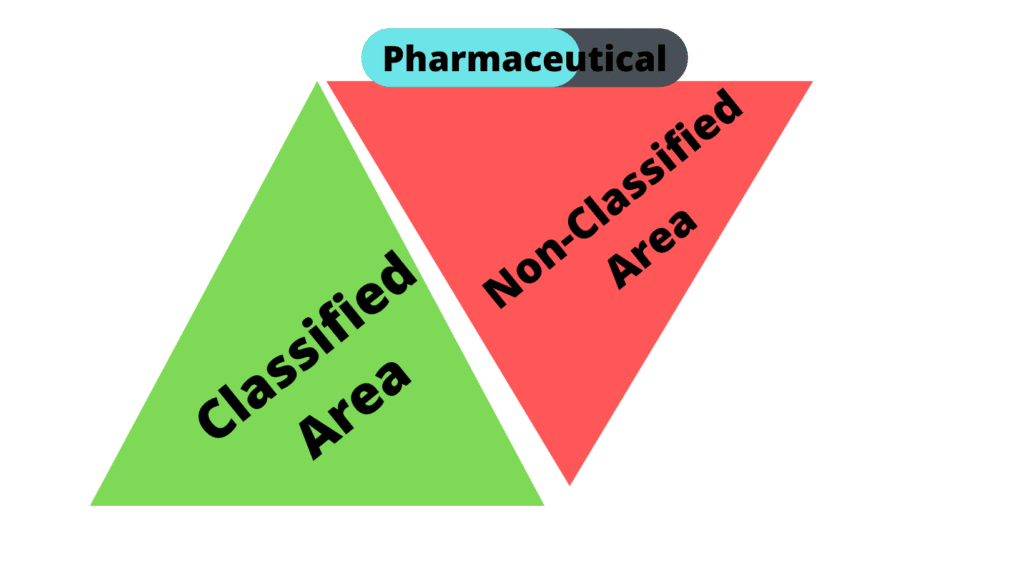In Pharmaceuticals it is very important to maintain the area as per the products or requirements of GMP. so what if the area where the product is not manufactured? So Based on activity Pharmaceutical industries divided areas into classified and non-classified areas/ Unclassified. The few concepts while Understanding the basic difference between Classified and Non-classified areas.

Classified Area
A classified Area having control of airborne particle amount is called a clean room or classified area. These areas are constructed to minimize the generation introduction and retention of airborne particles in the area. if say the area, where product Dispensing, manufacturing, and packing activity happens, it comes under a classified area.
An example of a classified area is Dispensing, Granulation, Compression, Coating, and Packing.
Non-classified/ Unclassified area
Non- classified areas have uncontrolled airborne particle amounts, but temperature and humidity are still maintained. is called non- classified/ unclassified area. Non- classifies area design as the non-process area or area in which the product does not comes in direct contact with air.
Example of Non-classified area is RM store, Packing material store, change room, packing hall, and quality control area.
Key Difference between classified and Non- classified areas
| Classified Area | Non- Classified Area |
| Particle size and concentration maintained under control | Particle size and concentration not maintained under control |
| The temperature and Relative humidity of that area are maintained | The temperature and Relative humidity of that area are maintained |
| Integration of HEPA Filter | HEPA Filter does not integrated |
| Design to prevent the product from contamination and cross-contamination | Design to prevent the Dust particle and outer environment effects |

Naresh Bhakar is the Founder and Author at Pharmaguddu.com, bringing his extensive expertise in the field of pharmaceuticals to readers worldwide. He has experience in Pharma manufacturing and has worked with top Pharmaceuticals. He has rich knowledge and provides valuable insights and data through his articles and content on Pharmaguddu.com. For further inquiries or collaborations, please don’t hesitate to reach out via email at Contact@pharmaguddu.com.
